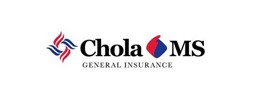Last updated on: September 19, 2025
Navigating the world of health insurance can be daunting, especially in a country as diverse and dynamic as India. Imagine Suresh, a 30-year-old freelance graphic designer, living in Bangalore. As someone who works independently, Suresh doesn’t have the luxury of an employer-provided health insurance plan. After a health scare that landed him in a hospital last year, he realized the urgent need for a reliable health insurance policy that could safeguard his finances against unexpected medical expenses. If you, like Suresh, are an individual seeking the best health insurance in India for 2025, you’re in the right place. This comprehensive guide will walk you through everything you need to know to make an informed decision.
Health insurance is not just a financial product; it’s a safety net that offers peace of mind. In a world where medical costs are skyrocketing, having an insurance policy can mean the difference between financial ruin and stability.
In the past decade, healthcare costs in India have increased by an average of 10-15% annually. A single hospital visit for a minor procedure can set you back several lakhs. In my experience, I’ve seen individuals who delayed getting insurance end up paying hefty bills out-of-pocket. You might be surprised to learn that a simple appendix surgery can cost upwards of ₹1 lakh in a private hospital in urban areas.
Imagine being able to focus on your recovery instead of being bogged down by financial concerns. That’s the true value of health insurance. In a recent survey, 80% of policyholders reported feeling more secure knowing they had coverage in case of medical emergencies.
Choosing the right health insurance policy is not just about picking the one with the lowest premium. There are several factors to consider to ensure you get the best coverage for your needs.
A policy’s coverage is its most crucial aspect. Look for plans that offer comprehensive coverage, including hospitalization, pre and post-hospitalization expenses, and cashless treatment options.
Every policy has exclusions. These are conditions or treatments that the policy does not cover. Common exclusions include:
While it’s essential to choose a policy with a manageable premium, don’t compromise on coverage for a lower price. Use online tools to compare premiums and understand the factors affecting them, such as age, lifestyle, and medical history.
A seamless claim process is vital. Look for insurers with a high claim settlement ratio and good customer reviews. You don’t want to be stuck in bureaucratic red tape during a medical emergency.
Pro Tip: Always read the fine print. Understand the terms and conditions thoroughly to avoid any surprises later.
Here, we’ll explore some of the leading health insurance providers in India. These companies have been selected based on their claim settlement ratio, customer service, and the comprehensiveness of their plans.
Star Health is known for its extensive network of hospitals and a wide range of policies catering to different needs.
ICICI Lombard offers flexible health insurance plans with the option to top-up coverage as needed.
Max Bupa is favored for its customer-centric approach and cashless network.
HDFC ERGO offers plans that cater to both individuals and families, with a focus on affordability.
As a government-owned company, New India Assurance is trusted for its reliability and comprehensive plans.
Before finalizing your health insurance policy, it’s crucial to understand the terms and conditions in detail. This ensures you are fully aware of the coverage and limitations of your policy.
Most health insurance policies have a waiting period for pre-existing diseases. This period can range from 2 to 4 years. During this time, claims related to these conditions will not be covered.
Some policies include a co-payment clause, where the insured bears a portion of the claim amount. While this can reduce your premium, it also means you’ll pay more out-of-pocket during claims.
Sub-limits are caps on specific expenses within your policy, such as room rent or specific treatments. It’s essential to choose policies with higher or no sub-limits to avoid paying extra during hospitalization.
Expert Insight: Always keep your insurer informed of any changes in your health status. This transparency can prevent disputes during claims.
Selecting the right health insurance plan is a personal decision that depends on various factors unique to your situation.
Consider your current health status, family medical history, and lifestyle. If you have a family history of chronic illnesses, opt for a plan with higher coverage for such conditions.
Use online comparison tools to evaluate different policies. Look beyond the premium and focus on coverage, claim settlement ratio, and network hospitals.
If you’re unsure, consult a health insurance advisor. They can provide insights tailored to your needs and help you navigate the complexities of different policies.
Hearing from current policyholders can provide valuable insights into an insurer’s customer service and claim process.
A family floater health insurance plan covers all family members under a single policy. It typically includes the primary insured, spouse, dependent children, and sometimes parents. The sum insured can be utilized by any member, offering flexibility and often proving more economical than individual policies for each family member.
A top-up health insurance plan provides additional coverage beyond the existing sum insured, but only after a threshold is crossed. Once your base policy’s coverage is exhausted, the top-up plan kicks in to cover the excess amount, making it a cost-effective way to enhance your coverage.
Even the most informed individuals can make mistakes when purchasing health insurance. Here are some common pitfalls and how to avoid them.
Many people focus on what a policy covers, neglecting its exclusions. Always review the list of exclusions to avoid unpleasant surprises during claims.
Choosing a policy based solely on its premium can lead to inadequate coverage. Consider the coverage benefits, claim settlement process, and network hospitals before making a decision.
Failing to disclose pre-existing medical conditions can lead to claim rejections. Always be transparent with your insurer about your health history.
The policy document contains crucial details about your coverage. Read it thoroughly to understand your rights and responsibilities as a policyholder.
Pro Tip: Consider inflation while choosing your sum insured. Medical costs are rising, and what seems adequate today might not be enough in a few years.
The health insurance landscape in India is evolving rapidly, with insurers offering more innovative and customized plans.
With the rise of digital platforms, purchasing and managing health insurance has become more convenient. Many insurers now offer online services for policy purchases, renewals, and claims.
Insurers are increasingly offering personalized plans tailored to individual health needs and lifestyles. This trend is likely to grow, providing more options for consumers.
Many insurers are introducing wellness programs that encourage policyholders to maintain a healthy lifestyle. These programs often include discounts or rewards for regular health check-ups and fitness activities.
Choosing the best health insurance in India for individuals requires careful consideration of your healthcare needs, budget, and the policy’s features. As we’ve explored in this guide, factors like coverage, network hospitals, claim process, and customer service are crucial in making an informed decision. By understanding these elements and avoiding common pitfalls, you can secure a health insurance plan that offers both financial protection and peace of mind.
Whether you’re like Suresh, seeking your first policy, or looking to upgrade your existing coverage, the insights shared in this article aim to empower you to make a well-informed choice. Remember, health insurance is not just a financial product; it’s an investment in your future well-being.












How could we improve this article?
Written by Prem Anand, a content writer with over 10+ years of experience in the Banking, Financial Services, and Insurance sectors.
Prem Anand is a seasoned content writer with over 10+ years of experience in the Banking, Financial Services, and Insurance sectors. He has a strong command of industry-specific language and compliance regulations. He specializes in writing insightful blog posts, detailed articles, and content that educates and engages the Indian audience.
The content is prepared by thoroughly researching multiple trustworthy sources such as official websites, financial portals, customer reviews, policy documents and IRDAI guidelines. The goal is to bring accurate and reader-friendly insights.
This content is created to help readers make informed decisions. It aims to simplify complex insurance and finance topics so that you can understand your options clearly and take the right steps with confidence. Every article is written keeping transparency, clarity, and trust in mind.
Based on Google's Helpful Content System, this article emphasizes user value, transparency, and accuracy. It incorporates principles of E-E-A-T (Experience, Expertise, Authoritativeness, Trustworthiness).